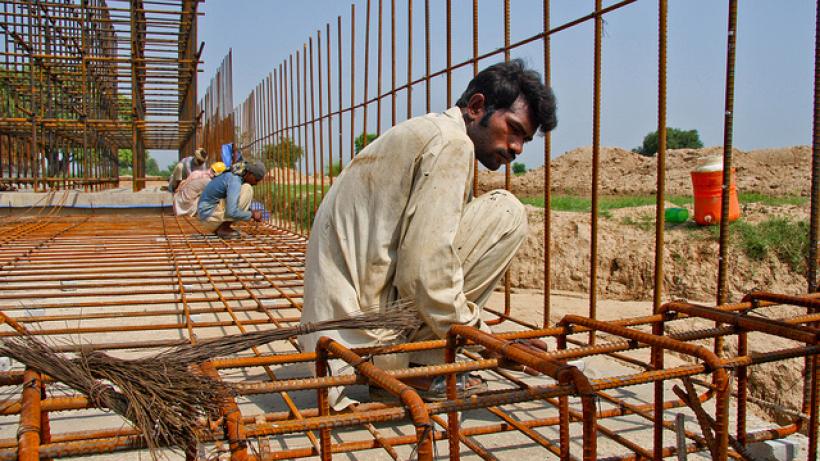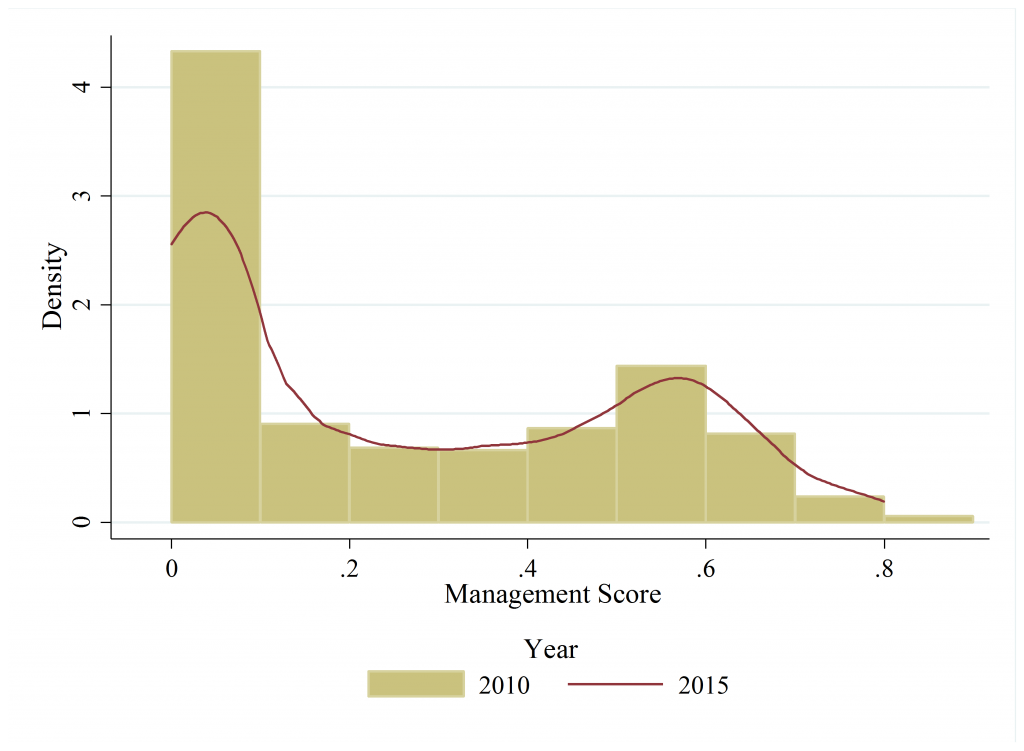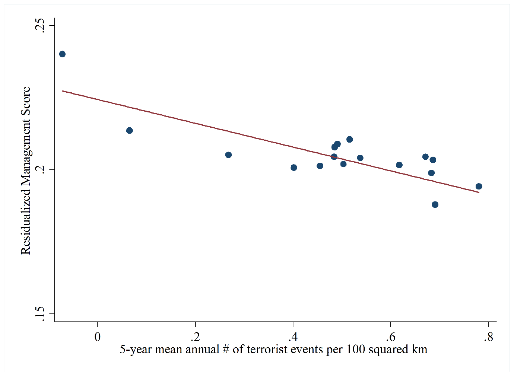
Management in Pakistan: Performance and conflict
Research on Pakistan offers a fascinating insight into the impact of terrorist events on the deterioration of managerial practices.
The causes and consequences of the vast dispersion in productivity within and across countries has been the subject of research for decades. Recently, researchers have woken up to the important role of management practices in firms to explain the patterns. Pakistan – a lower-middle income country – is an interesting study, as there is uneven growth across its provinces (despite an annual GDP growth rate of 5.7%) and a huge challenge of conflict reflected in a large number of terrorist events (higher than every other country in the last decade except Iraq). Since 2016, Centre for Economic Performance (CEP) researchers have worked with the State Bank of Pakistan and the Pakistan Bureau of Statistics to administer a nationwide survey of management practices in Pakistan. This survey was rolled out together with the Census of Manufacturing Industries in 2017-2018.
We looked at three broad areas of management: (i) the data-driven performance-monitoring practices, specifically the collection and use of information to monitor and improve the production process; (ii) the targets about the design and integration, and the realism of the production targets; and (iii) the incentives for workers i.e. bonuses, promotions, reassignments, and dismissals. We aggregate the responses into a single summary measure of “structured management,” scaled from 0 to 1, where 0 represents an establishment with no adoption and 1 represents an establishment with full adoption of structured management practices.
What did we find?
First, we looked at the state of adoption of management practices, its relationship to firm performance, and possible drivers across Punjab as well as KPK and Sindh – provinces that had so far been inaccessible to government agencies and researchers due to conflict. We find that Pakistani management practices are much lower as compared to international standards. The average firm in Pakistan adopts 24% of the overall structured management practices, 27% of data-driven performance monitoring practices, and 22% of incentives and targets. Second, we find considerable variation in the firm-level management practices across Pakistan, both within and between provinces, despite many firms reporting low levels of adoption. For example, the average firm in KPK adopts just 10% of the structured management practices, while the average firm in Sindh and Punjab embraces 29% and 32% respectively. Across all provinces, firms at the bottom 10% adopt no structured management practices, whereas the degree of adoption for firms at the top 10% varies widely across provinces - 35% in KPK, 62% in Sindh, and 63% in Punjab. Third, the factors correlated with management practices are similar to those in other countries. Firms that are larger, more skilled and export-oriented, listed on the stock market and older, appear to have higher management practice scores. Fourth, there is a strong positive relationship between management scores and measures of firm performance, such as productivity, profitability, and growth. This relationship holds across the three provinces examined.
Figure 1: Management distribution in PK
 Notes: The management score is the unweighted average of the score for each of the 16 questions, where each question is first normalised to a 0-1 scale. The figure considers only a balanced panel of 4,590 firms that responded to the PK-MOPS questions in both the 2010 and 2015 iterations.
Notes: The management score is the unweighted average of the score for each of the 16 questions, where each question is first normalised to a 0-1 scale. The figure considers only a balanced panel of 4,590 firms that responded to the PK-MOPS questions in both the 2010 and 2015 iterations.
Conflict and management
Lastly, given the high exposure to conflict for many firms in Pakistan, we tried to assess the extent to which the challenging law and order situation determined variation in management practices across firms. We focused on exploring variation within tehsil (lowest administrative unit) over time. This was done in order to address any unobserved heterogeneity specific to firm locations that could cofound the relationship between management and exposure to terrorist events. We found strong correlational evidence that areas with the largest increase in terrorist activities over the last decade - as measured by the annual average over the previous five years of the number of terrorist attacks, number of bombings on infrastructure, or the number of deaths caused by terrorism per 100 square kilometres - had the largest deterioration in management practices. Province-wise analysis for KPK, Punjab, and Sindh showed that the results were largely consistent throughout.
The magnitude of this finding is immense and economically meaningful. For example, doubling the number of terrorist attacks per 100 square kilometres is associated with a 14% lower adoption of structured management practices, after controlling for firm characteristics, year, industry and tehsil-fixed effects. To put this in perspective, the number of terrorist incidents in Pakistan approximately tripled between 2010-2015 and 2005-2010, suggesting a major potential depressing effect on management quality.
Figure 2: Management and conflict
 Notes: Tehsil-level fixed effects added. The plot used a pooled sample of both 2015 and 2010 (recall) observations on management score. The 2010 measure of terrorism accounts for the mean annual number of terrorist events in the five-year window between 2006 and 2010. The same is valid for 2015, which is based on a five-year window from 2011 to 2015.
Notes: Tehsil-level fixed effects added. The plot used a pooled sample of both 2015 and 2010 (recall) observations on management score. The 2010 measure of terrorism accounts for the mean annual number of terrorist events in the five-year window between 2006 and 2010. The same is valid for 2015, which is based on a five-year window from 2011 to 2015.
Policy implications
From a policy perspective, it is important to know the many channels through which exposure to terrorism causes a deterioration in management quality. These include difficulty in attracting good managerial talent to the area or in enforcing the rule of law and contracts. In order to tackle this issue and to improve the overall business environment, removing the potential barriers to the growth of better-managed firms ought to be critical going forward.

